Best Chicken Breeds for Eggs, Meat and Dual Purpose Varieties with Photos
An information guide to good egg laying chicken breeds available with images for your homestead and backyard. See which of the best laying hens and chickens are right for you.
3 MAIN TYPES OF CHICKENS: Hybrids, Pure-Breeds and Bantams
1) Hybrid Chickens - The majority of commercial birds are of hybrid stock. These being a cross between a number of different chicken breeds. They are hardy and less susceptible to diseases and some of the best egg laying chicken breeds can be found in this type of fowl.
2) Pure Breeds - Many of these are of old heritage chicken breeds are bred down through generations. Heritage chicken breeds are ideal if you are going to exhibit your birds. They are also ideal if you want to ensure the future of pure bred birds that have been bred for certain qualities that you will enjoy, whether it be for egg-laying or for meat production.
3) There is another type of chicken - Bantam Chickens which are in a class on their own, and ideal to keep when you don't have a lot of space as they are much smaller than the ones mentioned above. However, besides true bantams, there are also many large breeds of chickens which have been bred to become bantam chickens in size.
Of these hybrid and pure bred chickens, there are those that are good as egg layers, those that are good table birds for meat production, those that are just pretty to look at, and those that are dual-purpose; good for both eggs and meat.
3 Classes of Chicken Breeds
What makes up hybrids, pure breeds and bantams are 3 main classes of chickens:
- American Class of Chickens
- Asiatic Class of Chickens
- Mediterranean Class of Chickens
American Class
The main American chicken breeds are:- Plymouth Rocks
- Rhode Island Reds
- Wyandottes
However, besides these, there are also the Javas and the American Dominiques. Both these breeds are very old and are America's oldest breeds of chickens.
The Java chickens are similar to the Plymouth Rocks in size, shape and traits. The American Dominiques are the oldest American breed and it was from this breed that the Plymouth Rock originated.
Asiatic Class
The main Asiatic breeds are large, solid birds, quiet birds that make very good chickens for pets because of their docile natures. However, primarily the Asiatic birds, because of their large size are reared as meat chickens:- Brahmas
- Cochins
- Langshams
Cochins have been bred for their size and there are several varieties such as the Buff Cochin, Partridge Cochin, Black Cochin and White Cochin. They are not great egg layers.
Langshams, both black and white were introduced into America, and again are large, docile birds bred for their meat.
Mediterranean Class
The Leghorns are the best breed from the Mediterranean class for eggs, and in fact, the best layers around at the moment. Other than the Leghorns there are other types:- Black and White Minorcas
- Andalusians
- Anconas
- Whitefaced Black Spanish
Chicken Breeds for Meat
If you are only interested in breeds of chicken for eating then you should be looking at:- Brahmas
- Jersey Giants
- Langshams
- Cochins
Here is a list of both hybrid meat chickens and old breed and crossed meat chickens
Modern Hybrid Meat Chickens
* Shaver Starbro
* Marshall
* Arbor Acre broiler
* Red Feathered Shaver Redbro
* ISA 657 Red-feathered broiler
Old Breeds and Crosses
* Whited feathered White Sussex* White Cornish
* Red feathered Dorking
* Indian Game
* Rhode Island Red x Light Sussex
* Light Sussex x Indian Game (or vice versa)
* Plymouth Rock
Chicken Breeds for Eggs
If you are only interested in keeping chickens for eggs, then you should be looking at the following chicken breeds:- Leghorns
- Spanish
- Minorcas
- Anconas
- Andulusians
Chicken Breeds for Meat and Eggs
Finally, if you want to keep chickens for both meat and eggs then you should be looking at keeping:- Rhode Island Reds
- Plymouth Rocks
- Orpingtons
- Wyandottes
My Opinion on the Best Chicken Breeds for Eggs
In the past I have kept Rhode Island Reds crossed with Light Sussex and they are excellent layers too producing eggs 6 days out of 7 during the laying season.
They did go off the boil for a while when a lot of them were broody, but eventually they sorted themselves out and went back to laying eggs once again. However, this is one disadvantage of Rhode Island Reds crossed with Light Sussex - they do tend to go broody more than other laying hens.
If you want to your hens to raise their own chicks, then this chicken breed would be the perfect mother. However, if you are just keeping laying hens for eggs, then you may want to look at Leghorns crossed with Rhode Island Reds, or pure Leghorns.
If you are looking for good laying hens in general, trying to decide on the best chicken breed for you. There are plenty to choose from, as you will see from the list below, and although pure bred chickens, in the main, are pretty to look at, mixed-breeds are more hardy, and often very good layers for the backyard chicken keeper.
However, having said all that, not all chicken breeds lay at the same time throughout the year and it is better to keep two breeds that will give you a good supply all year round.
Many chicken keepers will keep Leghorns as their main flock, but then they will also keep American breeds of chicken as well. This is because American chicken breeds will often lay throughout the winter, while the Leghorns won't. During the summer, the Leghorns are better layers than the American breeds.
Plymouth Rocks, although good layers, only out produce Leghorns in March. However, because they are hardy birds they lay well during winter. The Wyandottes produce more eggs during December, January, September, and October.
The Rhode Island Reds lay well in January through to April, but during November, May, June, July, and August, the Leghorns usually outlay all their competitors.
Finally, on a personal level, I thought I would mention ISA Browns. They are not a chicken breed, but rather a hybrid chicken. They are excellent chicken layers of brown eggs that are often the choice of chicken used by egg farms.
I have just acquired 2 of late, and are impressed with their performance. They are said to lay 300 eggs a year. The only downside is, that because the ISA Brown is such an egg-laying machine, they have a very short lifespan. However, I am hoping to beat this by keeping up their protein levels. We shall see. I also keep Plymouth Barred Rocks as they are an excellent dual purpose bird that do well in cold weather. And we also have Columbian Rocks.
Basically,
if you want to keep chickens for eggs, you really have to keep a number
of different chicken breeds that will produce eggs for you over the
year, because you will find that when one type is not laying as well,
the other varieties are.
So you can see that keeping a number of different chicken breeds for eggs would make far more sense, than just having one type of chicken.
However, I do have to add, that if you don't get your hens to lay by September or October after they have moulted, they probably won't lay again until the following spring.
As a result you will find that some breeders force their hens into moulting by reducing the grain drastically from mid-July through to mid-August, giving the hens only enough grain to keep them alive. After that, they are then given lots of grain and lots of sunflower seeds.
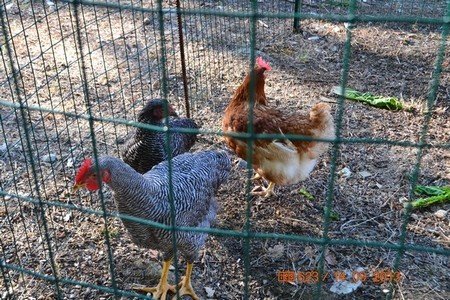
Here is one of my ISA Brown hens, along with my Plymouth Barred Rocks.
My personal pick for good laying hens is any of the following 4 chicken breeds that are cross-bred with each other:
- White Leghorns
- Rhode Island Reds
- Light Sussex
- White Wyandottes
Rhode Island Reds,
crossed with
White Wyandottes makes another excellent cross-breed for
chickens.
Cross-Breeding Chickens for Eggs and Sex-Linking
If you are going to go into cross-breeding chickens, you need to know what the off-spring will look like.
If you mate a Rhode Island cockerel with a Light Sussex hen the male chicks will be white in color, like the hen, and the female chicks will be reddish brown, like the father. This is called "sex-linking" in chickens and makes identifying the sexes easier.
If you mate a Rhode Island cockerel with a White Wyandotte hen, you will again get the same result where the female chicks are reddish brown, and the male chicks are white. The offspring of this mix, makes better layers than those crossed with a Light Sussex.
You will not be able to sex-link chicks if you have a light colored cock, such as a White Leghorn and mate it with a Rhode Island hen, for example.
However, sex-linking can be done with mixed-bred chicks in a following generation, if you mated a Rhode Island Red cockerel with a hybrid that was the result of a mating of a Rhode Island Red cockerel with a White Leghorn, for example.
Chicken Breeds that Lay Brown Eggs
Despite the fact that there is no nutritional difference in both brown and white eggs, many people want chickens that lay brown eggs.
There are many hybrid breeds as well as pure breeds or first crosses that lay brown eggs, and I thought I would list them here for you, as on overview.
Hybrid Layers of Brown Eggs
* Hisex Brown
* Shaver Brown
* Hy-Line Brown
* Babcock Brown
* Ross Brown
* Hubbard Golden Comet
Pure Breed Chicken Layers of Brown Eggs
* Rhode Island Red
* Barred Plymouth Rock
* Black Rock
* Rhode Island Red x Light Sussex
* Dorset
* Wellsummer
GOOD EGG LAYING CHICKEN BREEDS: BEST EGG LAYERS

|
HAMBURG CHICKEN BREEDSOriginally from Holland, despite its name. Active and flighty chickens that are considered good laying hens, laying 200 - 220 small white eggs every year. Several varieties including Silver Spangled Hamburgs, Golden Spangled Hamburgs, Gold- Pencilled and Silver-Pencilled.
Active |
HOUDAN CHICKEN BREEDS
A striking bird, originally
from
France. It has a crest, beard and muffs and has 5 toes. 200-220
eggs
per year, so making these average laying hens.  Exhibition Bird |
MINORCA CHICKEN BREEDS
Originally
from Spain. This
ancient chicken, known to the Romans lays about 220-240
large
white eggs every year during productivity. So good laying hens that are
hardy and good foragers for their food. The
most common color is
black, but you get white, buff and blue Minorca chickens too. Large
combs and wattles. Developed for the production of very large
chalk-white eggs, the Minorca is today principally an exhibition fowl. 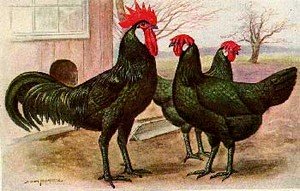 Good
Foragers |
ARAUCUNA CHICKEN BREEDSThe Araucuna is a South American bird that is rumpless and a producer of medium-sized blue/green eggs. Lays 180-200 eggs a year. So good laying chickens and a good layer for those unusually colored eggs. It is the only chicken breed to lay colored eggs of red, blue or green.
|
BARNVELDER CHICKEN BREEDS
A quiet and often lazy little
bird that lays 180-200 light brown eggs a
year. Originally from the
town of Barnvelder in Holland, it is the most popular dual purpose
chicken in this country. Good chicken for damp and cold, windy climates. 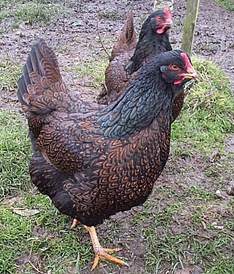 Good
Dual Purpose Bird |
INDIAN GAME FOWL
Also known as Cornish
chickens.
Originally from Cornwall. Not good egg layers; 160-180
eggs
a year. Kept
for meat purposes as it has a well muscled body, but also needs
substantial amounts of food. 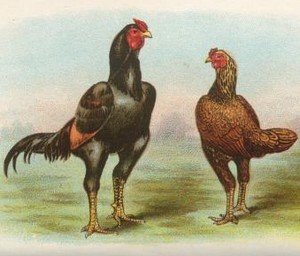 Broody |
PENEDESENCA CHICKEN BREEDS
The Penedesenca, once
close to extinction in the 80s but now only semi-rare. The Penedesenca
has white
ear lobes but lays deep red-brown eggs with a sheen to them. 160-180
eggs a year. 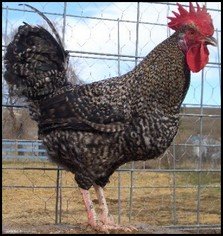 Gentle if hand-raised. |
PLYMOUTH ROCK
An American breed of
chicken. Plymouth Rocks are a good general farm chicken. They
are docile and easy to handle. They will normally will show broodiness
and possess a long, broad back;
a moderately deep, full breast and a single comb of moderate size.
Because of their size they are not flighty. The best known
type is a barred plymouth rock chicken breed, as shown below. The
Plymouth rock chickens are average egg layers with 160-180
eggs a year. 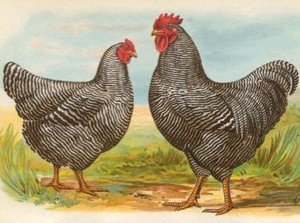 Broody |
WYANDOTTE CHICKEN BREEDS
An American breed of
chicken. Wyandottes have a well-rounded body and their docile natures
make them ideal backyard chickens. They lay 180-200
eggs a year, and
are pretty birds to look at. There are a number of types such as black,
white, silver laced, gold laced, buff, Columbian and
silver-pencilled. 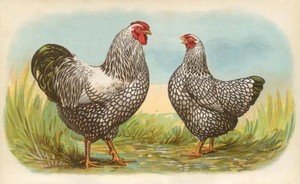 Docile |
A Quick Reference to Pure Poultry Breeds
| CHICKEN BREED | TYPE | ORIGIN | COLOR OF EGGS |
| Ancona | Light | Italy | Creamy White |
| Andalusian | Dual Purpose | Spain | White |
| Appenzeller | Light | France | White |
| Araucana | Light | Chile | Blue Green |
| Aseel | Heavy | India | White |
| Australorp | Heavy | Australia | Light Brown /Tinted |
| Barnevelder | Heavy | Holland | Brown |
| Brahma | Heavy | India/USA | Brown |
| Bresse | Heavy | France | White |
| Campine | Light | Belgium | White |
| Cochin | Heavy | China | Deep Brown |
| Creve-Coeur | Heavy | France | White |
| Dorking | Heavy | UK | White |
| Faverolle | Heavy | France | Cream |
| Hamburg | Light | UK/Holland | White |
| Houdan | Light | France | White |
| Indian Game | Heavy | UK | Brown |
| Ixworth | Heavy | UK | White |
| Jersey Giant | Heavy | UK | Tinted |
| Lakenfelder | Light | Holland/Germany | White |
| Langshan | Dual Purpose | China | Dark Brown |
| Leghorn | Light | Italy | White |
| Le Fleche | Heavy | France | White |
| Malay | Heavy | Asia | Tinted |
| Maline | Dual Purpose | Belgium | Pale Brown |
| Maran | Dual Purpose | France | Dark, Speckled Brown |
| Marsh Daisy | Dual Purpose | UK | Tinted |
| Minorca | Light | Spain | White |
| Modern Game | Light | UK | Tinted |
| Naked Neck | Light | Hungary | White |
| New Hampshire Red | Heavy | USA | Tinted |
| Norfolk Grey | Dual Purpose | UK | Tinted |
| North Holland Blue | Dual Purpose | Holland | Brown |
| Old English Pheasant Fowl | Heavy | UK | Tinted |
| Old English Game | Heavy | UK | Tinted |
| Orloff | Heavy | Russia | Tinted |
| Orpington | Heavy | UK | Brown |
| Plymouth Rock | Heavy | USA | Tinted |
| Poland | Light | Poland | White |
| Redcap | Light | UK | White |
| Rhode Island Red | Dual Purpose | USA | Deep Brown |
| Scots Grey | Light | UK | White |
| Scots Dumpy | Light | UK | Tinted |
| Sicilian Buttercup | Light | Italy | White |
| Silkie | Light | China | White |
| Spanish | Light | Spain | White |
| Sultan | Heavy | Asiatic | White |
| Sumatra Game | Heavy | India | White |
| Sussex | Heavy | UK | Tinted |
| Welsummer | Light | Holland | Brown, Speckled |
| Wyandotte | Dual Purpose | USA | Brown |
| Yokohama | Light | Japan | White |
How to Get Eggs from your Chickens Every Day
There are 3 things that guarantee eggs every day:
* Meat in their diet every day if they don't have access to the outside
* Greens in their diet every day
* A sprinkling of cayenne pepper in their food every day
So there you have it! A no-fail recipe for getting eggs from chickens on a daily basis. See our article on feeding chickens for more details.
Did you find this page helpful?
Sharing is a way of saying, "Thanks!"
Follow Us and Keep Up to Date
Other Chicken Resources you May be Interested In
Go to Aren't Chickens all the Same?
Go to Feeding Chickens
Go to Cleaning Chicken Pens with Fire
Go to Chicken Coop Plans
Go to Chicken House Plans
Go to Bantam Chickens
Go to Backyard Chickens
Go to FAQ Raising Chickens
Go to Butchering Chickens
Go to Caponize Chickens
Go to Coccidiosis in Chickens
Go to Self-Sufficient Living
Go to Chicken Recipes
Go to Farm Animals
Don't miss out on our latest news and articles. Sign up for our free monthly e-zine!
OTHER SECTIONS OF INTEREST
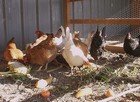 Feeding
Chickens
Feeding
Chickens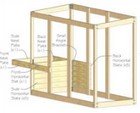
Chicken Coop Plans
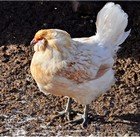 Natural
Remedies for Sick Chickens
Natural
Remedies for Sick ChickensChicken eBooks and Information

Click Here

Click Here
Make an Incubator

Click Here

Click Here
Raising Chickens Bonanza

Click Here
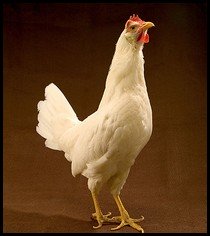
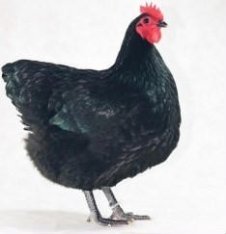
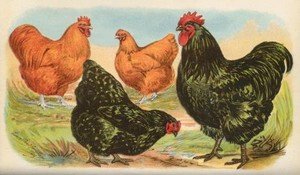
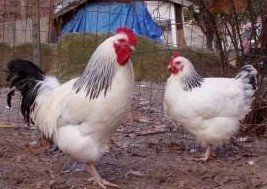
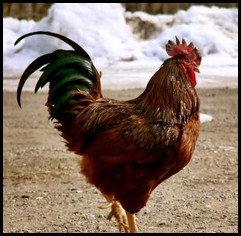
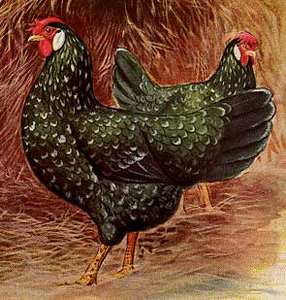
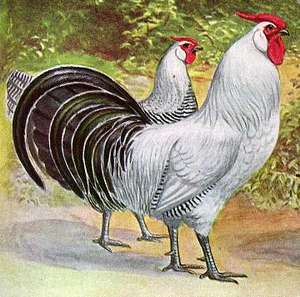
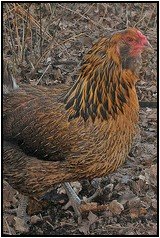




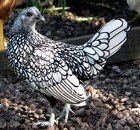
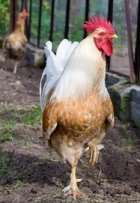
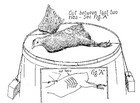
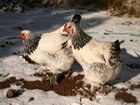
New! Comments
Do you have something of value to add? Leave me a comment in the box below.